The Za'atari refugee camp has become the gateway for the majority of the 600,000 Syrians that have fled their homeland since seemingly innocuous government protests escalated into a bloody civil war.
Image may be NSFW.
Clik here to view.
Syrian boys stand in front of a security wall with the words "Freedom is from God. May he curse the soul of Bashar Al-Assad the mule" in Arabic. Assad's regime has driven over 2 millions Syrians from their country through a brutal military campaign. April 7, 2014. David Maurice Smith/Oculi.
Opened on July 28, 2012 and located on the dusty outskirts of Mafraq, Jordan, Za'atari was designed to house only a fraction of the over 100,000 Syrian refugees that now call it home. In July of 2013, the camps population reached 144,000 people, making it technically the fourth largest city in the Kingdom of Jordan and the second largest refugee camp in the world. As Syria spiraled downwards, more and more desperate civilians made their way to Za'atari, increasing the pressure on the UNHCR and other organizations trying to keep the situation under control.
Despite being safe from the Assad regime, life in Za'atari presents a new set of difficulties, associated with trying to provide food, shelter and medical care to such a huge number of desperate people. Many Syrians have chosen to leave the safety of the camp and try to forge a life in other urban areas of Jordan, while others have made the dangerous decision to go back to Syria. For those that remain, the future remains in limbo, a mystery clouded by desert dust and the struggle to get through each day. Healing must wait, as the focus of meeting basic needs for so many remains paramount.
Image may be NSFW.
Clik here to view.
The sprawl of the Za'atari refugee camp. The camp was originally designed to house only a fraction of the over 100,000 Syrians that are currently living there. to house only April 2, 2014.David Maurice Smith/Oculi.
Image may be NSFW.
Clik here to view.
Ibrahim Mousa Al Ribai, aged 81 yrs is wheelchair bound and was carried to Jordan by his family from their hometown of Daraa, Syria after it was bombed. He has had two heart attacks recently, one when his home was destroyed in Daraa and a second while living in Za'atari upon learning of his sons death in Syria. April 2, 2014. David Maurice Smith/Oculi.
Image may be NSFW.
Clik here to view.
Men connect electric lines to the Za'atari refugee camp main power grid to divert electricity to shop fronts, tents and caravans. April 4th, 2014. David Maurice Smith/Oculi.
Image may be NSFW.
Clik here to view.
A Syrian man holds a prized pigeon, one of many he keeps inside the Za'atari refugee camp. April 3, 2014. David Maurice Smith/Oculi.
Image may be NSFW.
Clik here to view.
Three-and-a-half year old Basura Hijazi was just two when a regime bomb hit her families 4th floor Damascus apartment, setting her alight and leaving her with life threatening burns on the upper half of her body. April 3, 2014. David Maurice Smith/Oculi.
Image may be NSFW.
Clik here to view.
Syrian refugees reflected in the window of a shop on the main street through camp. April 3, 2014. David Maurice Smith/Oculi.
Image may be NSFW.
Clik here to view.
A tent supplied to Syrian refugees by the United Nations High Comissioner for Refugees is lit up from the inside at night. April 3, 2014. David Maurice Smith/Oculi.
Image may be NSFW.
Clik here to view.
Aisha Jurmami, aged 40 yrs inside her family caravan in the Za'atari refugee camp. Aisha suffers from a psychological condition and deteriorated quickly back in Syria after there town of Al Shajara was cut off from supplies by fighting. Her well-being has increased dramatically since arriving in camp and receiving regular treatment. April 2, 2014. David Maurice Smith/Oculi.
Image may be NSFW.
Clik here to view.![2014-06-13-DMS_Zaatari_0010.jpg]()
Young men shop for second hand clothes at one of the many market stalls inside of the Za'atari refugee camp. A bustling economy has flourished inside the camp with everything from clothing to appliances available for purchase. April 2, 2014. David Maurice Smith/Oculi.
Image may be NSFW.
Clik here to view.![2014-06-13-DMS_Zaatari_0011.jpg]()
Syrian men stand near a fire in the morning on the outskirts of the Za'atari refugee camp. April 3, 2014. David Maurice Smith/Oculi.
Image may be NSFW.
Clik here to view.![2014-06-13-DMS_Zaatari_0012.jpg]()
A Syrian boy with his donkey team. The beasts are used to transport goods inside the Za'atari camp. April 3, 2014. David Maurice Smith/Oculi.
Image may be NSFW.
Clik here to view.![2014-06-13-DMS_Zaatari_0013.jpg]()
A Syrian man moves goods with a wheelbarrow while boys play with a wheelchair on the outskirts of Za'atari camp. April 3, 2014. David Maurice Smith/Oculi.
Image may be NSFW.
Clik here to view.![2014-06-13-DMS_Zaatari_0014.jpg]()
A man climbs from a water truck to fill an above ground tank with water. of the Za'atari refugee camp. April 3, 2014. David Maurice Smith/Oculi.
Image may be NSFW.
Clik here to view.![2014-06-13-DMS_Zaatari_0015.jpg]()
Syrian boys play marbles in the morning in the Za'atari refugee camp. April 3, 2014. David Maurice Smith/Oculi.
Image may be NSFW.
Clik here to view.![2014-06-13-DMS_Zaatari_0016.jpg]()
A Syrian boy runs past one of the constructed toliet/shower blocks inside of the Za'atari refugee camp. The camp struggles to deal with the infrastructure needed for sewage and waste water with the volume of refugees arriving far exceeding the numbers initially expected. April 3, 2014. David Maurice Smith/Oculi.
Image may be NSFW.
Clik here to view.![2014-06-13-DMS_Zaatari_0017.jpg]()
A donkey is fixed with a harnass and cart, used to move goods and building supplies around the camp. April 2, 2014. David Maurice Smith/Oculi.
Image may be NSFW.
Clik here to view.![2014-06-13-DMS_Zaatari_0018.jpg]()
A family inspects the damage after a confrontation between Syrian refugees in the camp and the Jordanian Military Police escalated, resulting in one confirmed death from a gunshout, scores of wounded Syrians and police and upwards of 20 burned tents and caravans. April 6, 2014. David Maurice Smith/Oculi.
Image may be NSFW.
Clik here to view.![2014-06-13-DMS_Zaatari_0019.jpg]()
Blood stains on the ground after a confrontation between Syrian refugees in the camp and the Jordanian Military Police escalated, resulting in one confirmed death from a gunshout, scores of wounded Syrians and police and upwards of 20 burned tents and caravans. The exact cause of the altercation and scope of the damage is unknown as official statements released by the Jordanian authorities and eyewitness accounts greatly vary. April 6, 2014. David Maurice Smith/Oculi.
Image may be NSFW.
Clik here to view.![2014-06-13-DMS_Zaatari_0020.jpg]()
Camp residents inspect the damage after a confrontation between Syrian refugees in the camp and the Jordanian Military Police escalated, resulting in one confirmed death from a gunshout, scores of wounded Syrians and police and upwards of 20 burned tents and caravans. The exact cause of the altercation and scope of the damage is unknown as official statements released by the Jordanian authorities and eyewitness accounts greatly vary. April 6, 2014. David Maurice Smith/Oculi.
Image may be NSFW.
Clik here to view.![2014-06-13-DMS_Zaatari_0021.jpg]()
Syrian boys swim in a water resevoir on the edge of the Za'atari refugee camp. April 6, 2014. David Maurice Smith/Oculi.
This post is the second of two parts by Oculi collective photographer David Maurice Smith documenting Syrian refugees in Jordan. The first part focused on refugees living outside camps in the urban areas near the Syrian border and can be seen here.
--
Photography and text by David Maurice Smith (@davidmauricesmith).
Image may be NSFW.
Clik here to view.
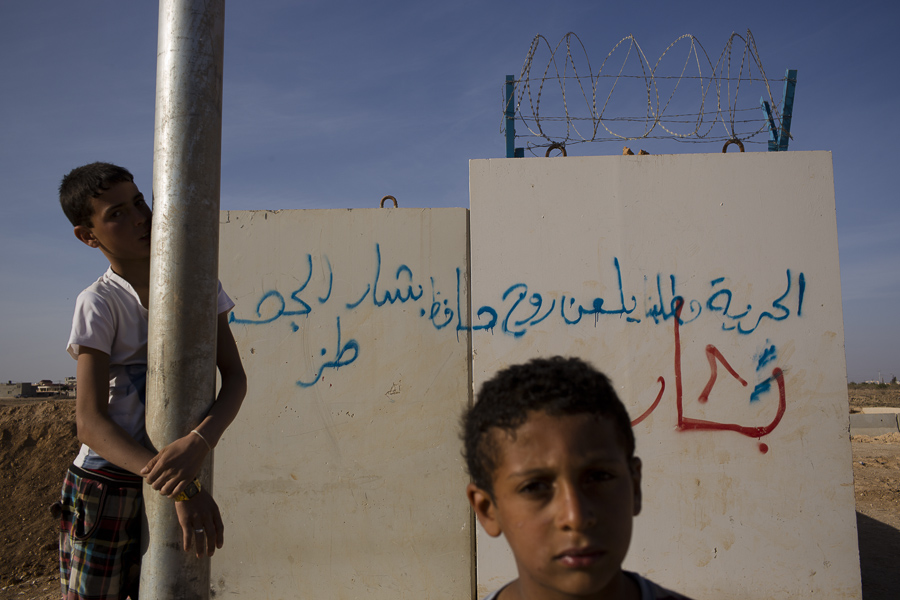
Opened on July 28, 2012 and located on the dusty outskirts of Mafraq, Jordan, Za'atari was designed to house only a fraction of the over 100,000 Syrian refugees that now call it home. In July of 2013, the camps population reached 144,000 people, making it technically the fourth largest city in the Kingdom of Jordan and the second largest refugee camp in the world. As Syria spiraled downwards, more and more desperate civilians made their way to Za'atari, increasing the pressure on the UNHCR and other organizations trying to keep the situation under control.
Despite being safe from the Assad regime, life in Za'atari presents a new set of difficulties, associated with trying to provide food, shelter and medical care to such a huge number of desperate people. Many Syrians have chosen to leave the safety of the camp and try to forge a life in other urban areas of Jordan, while others have made the dangerous decision to go back to Syria. For those that remain, the future remains in limbo, a mystery clouded by desert dust and the struggle to get through each day. Healing must wait, as the focus of meeting basic needs for so many remains paramount.
Image may be NSFW.
Clik here to view.
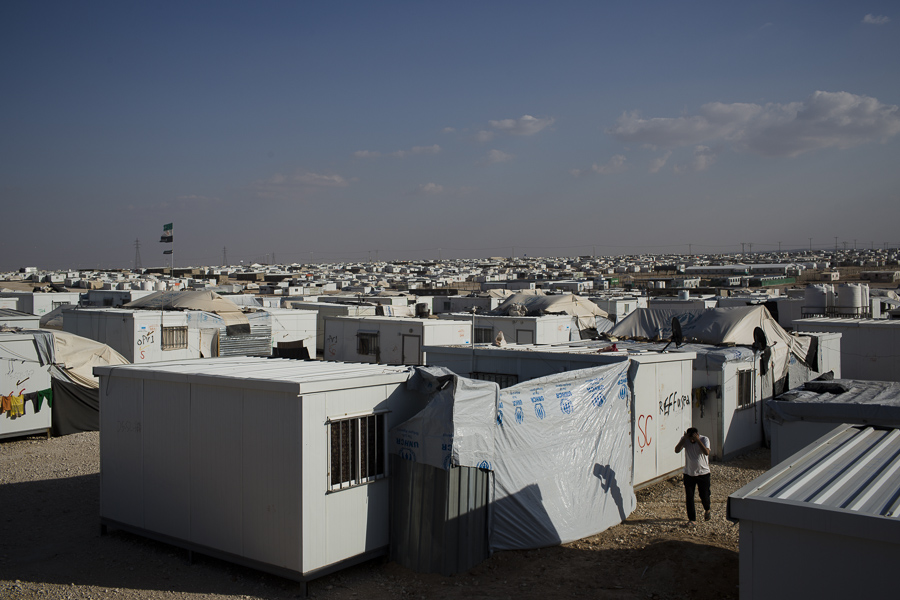
Image may be NSFW.
Clik here to view.
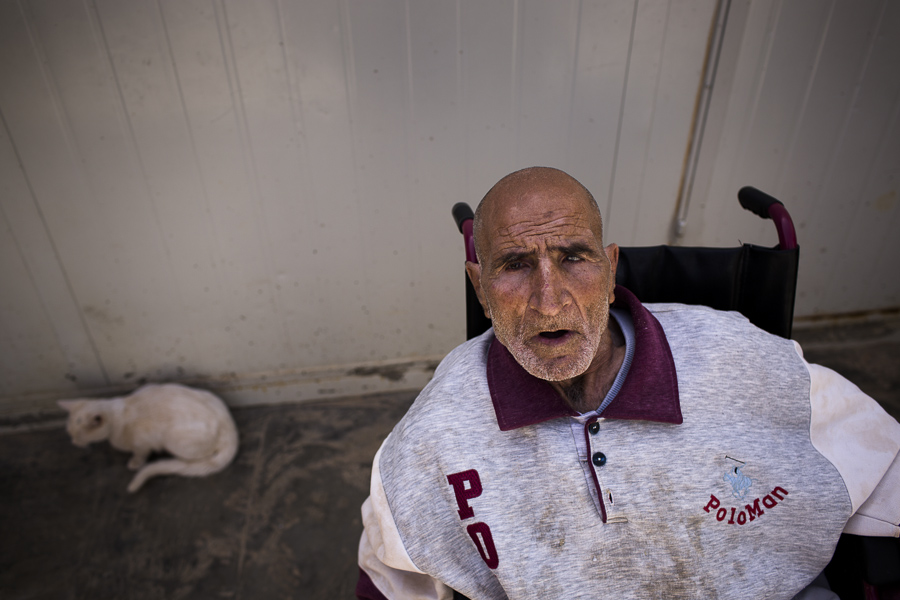
Image may be NSFW.
Clik here to view.

Image may be NSFW.
Clik here to view.
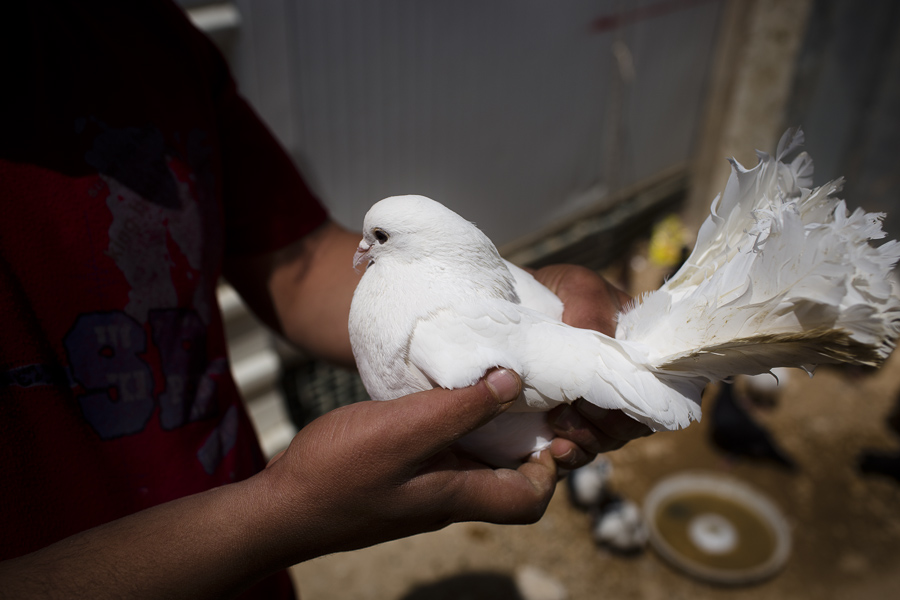
Image may be NSFW.
Clik here to view.
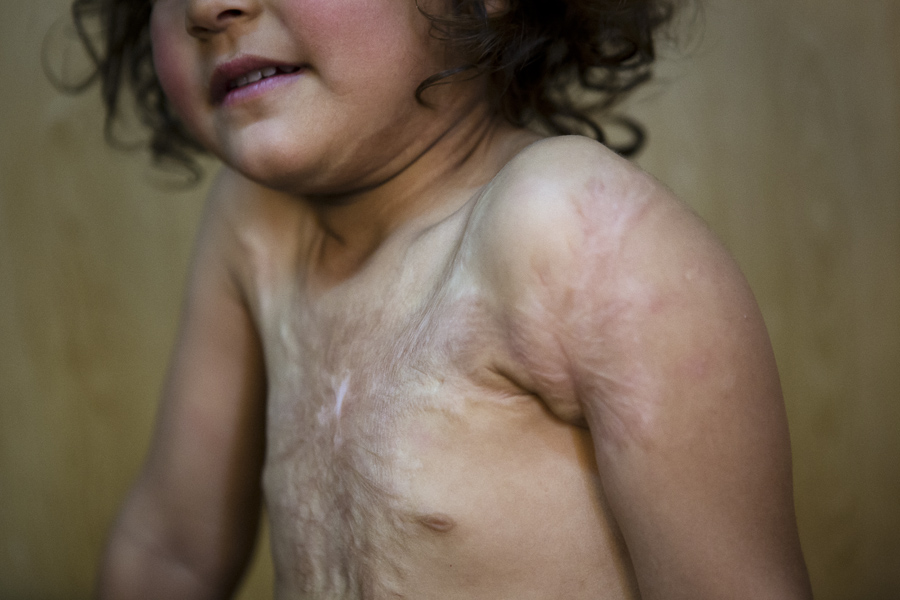
Image may be NSFW.
Clik here to view.
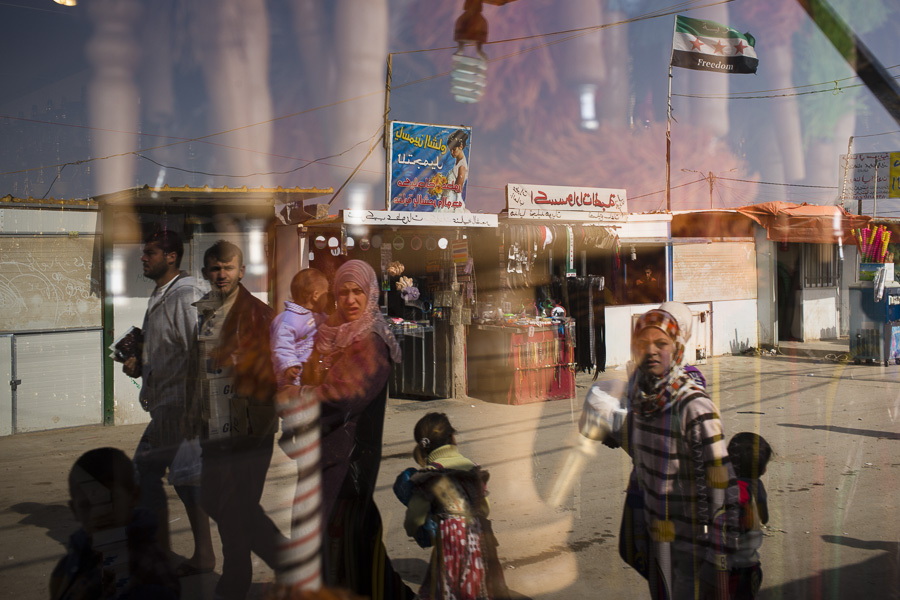
Image may be NSFW.
Clik here to view.
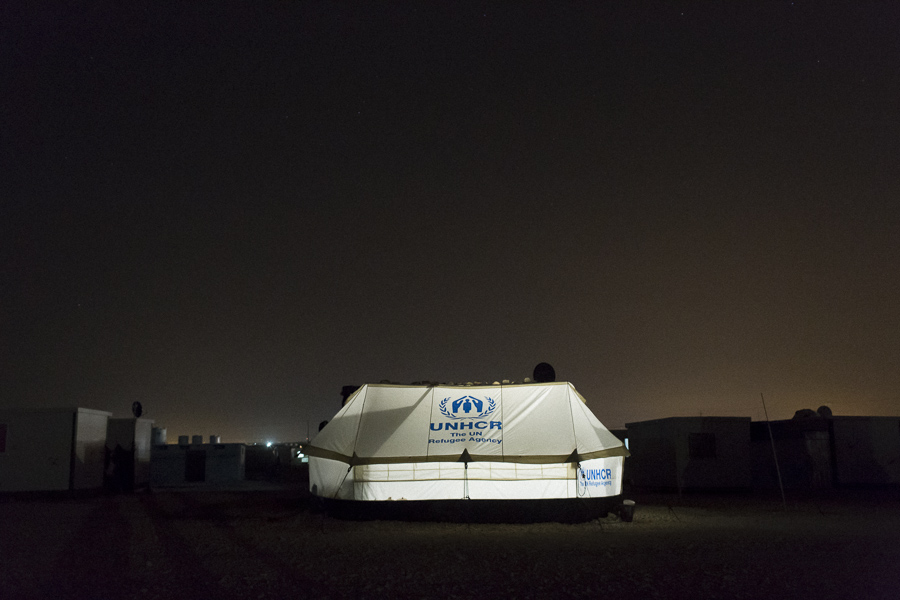
Image may be NSFW.
Clik here to view.
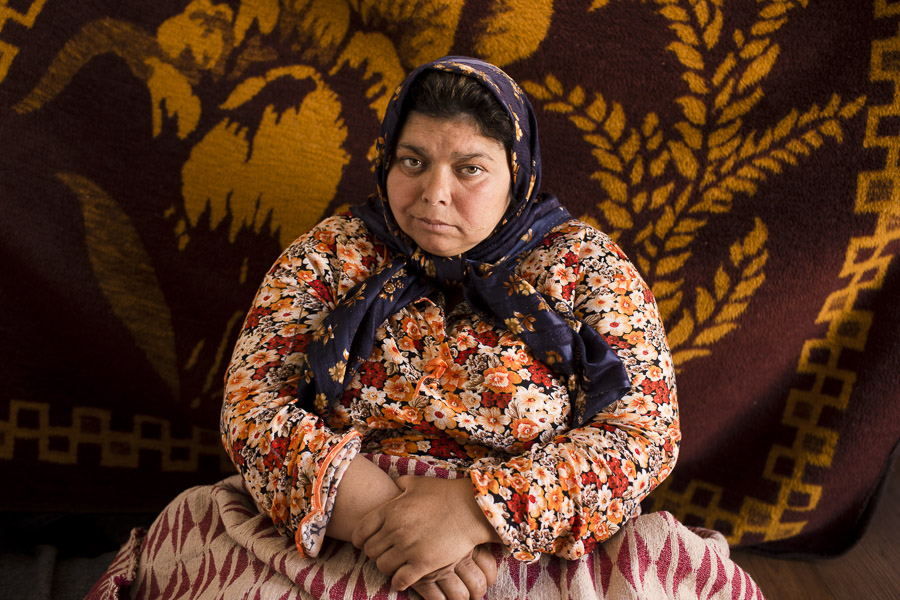
Image may be NSFW.
Clik here to view.
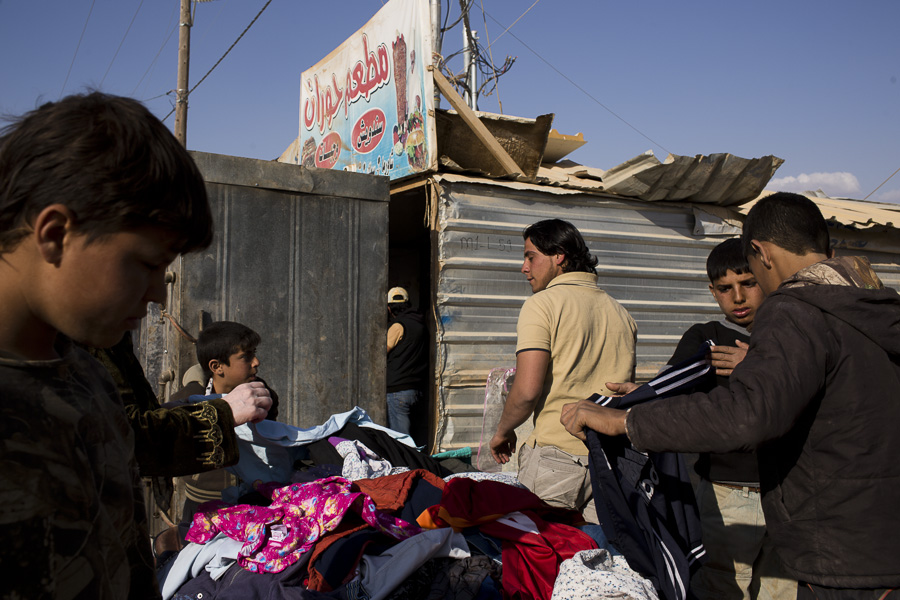
Image may be NSFW.
Clik here to view.
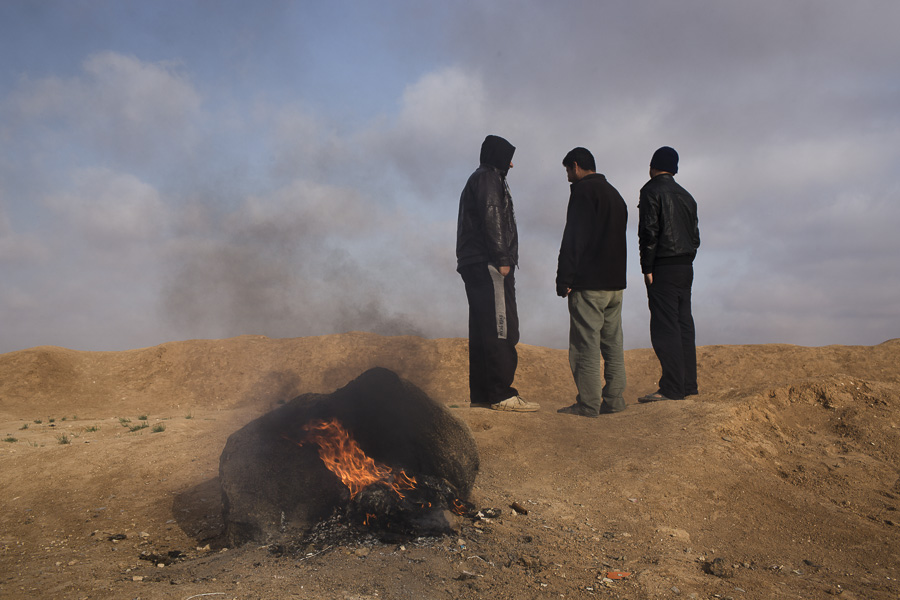
Image may be NSFW.
Clik here to view.
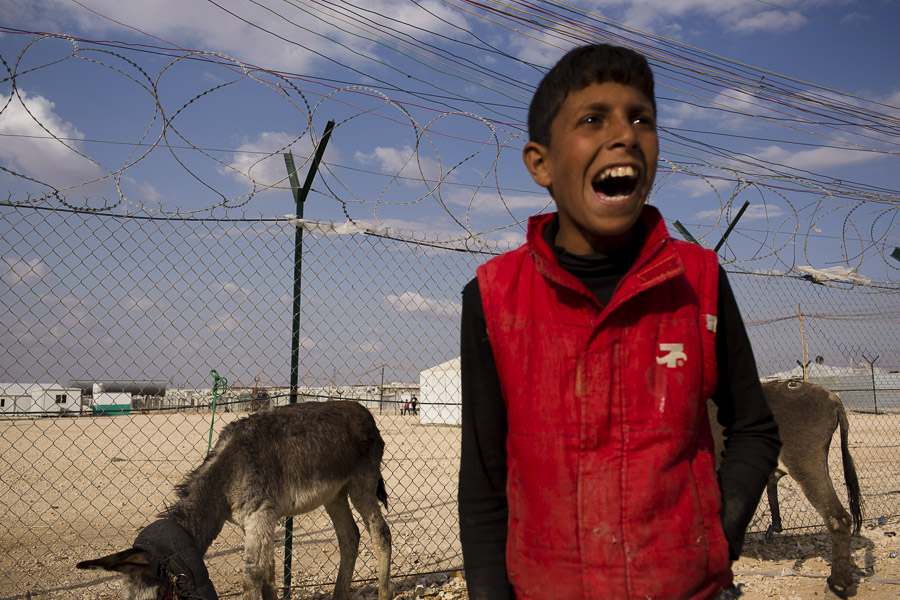
Image may be NSFW.
Clik here to view.
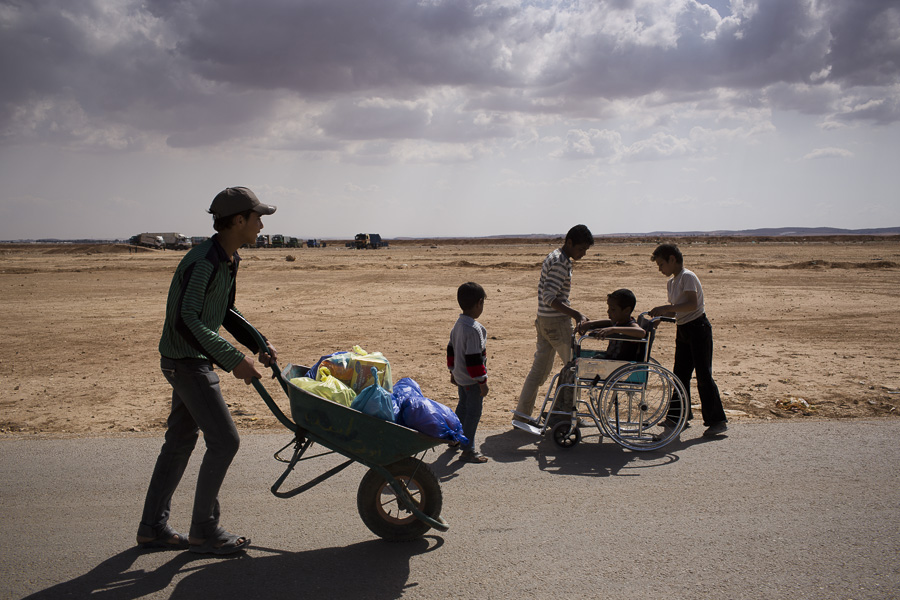
Image may be NSFW.
Clik here to view.
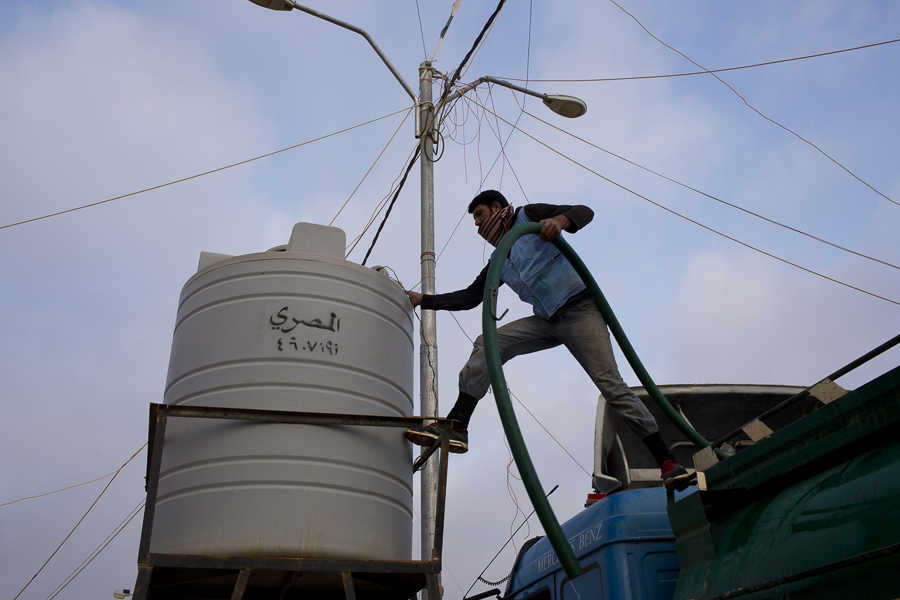
Image may be NSFW.
Clik here to view.
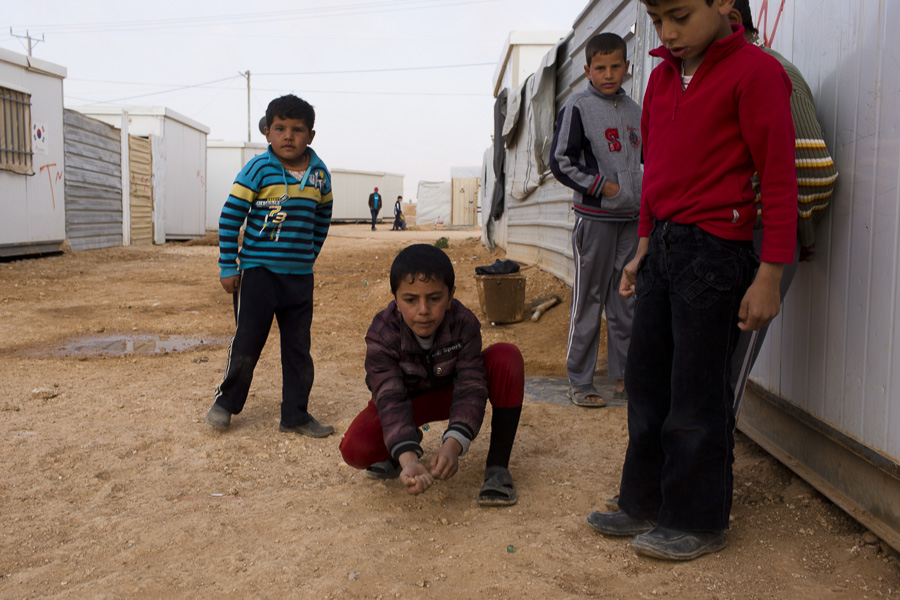
Image may be NSFW.
Clik here to view.
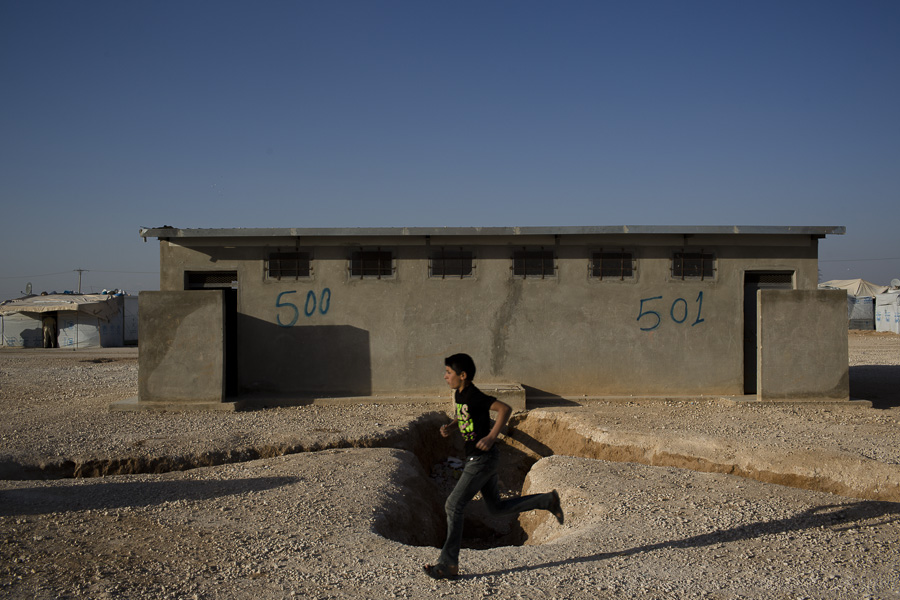
Image may be NSFW.
Clik here to view.
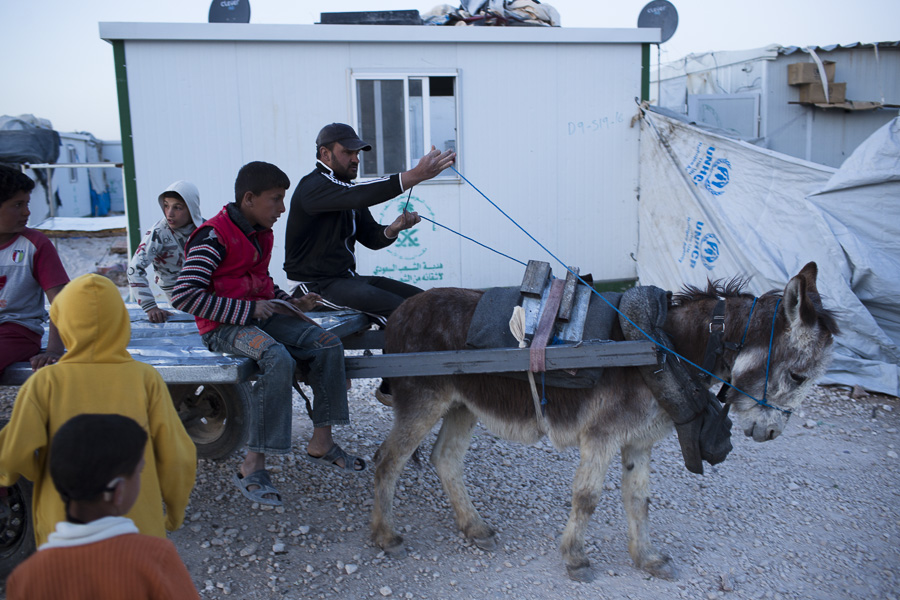
Image may be NSFW.
Clik here to view.

Image may be NSFW.
Clik here to view.
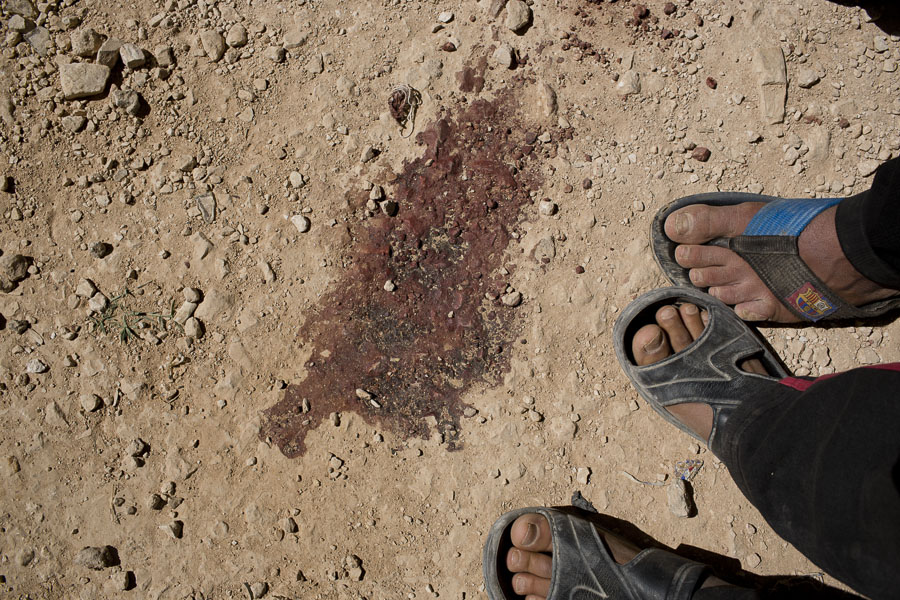
Image may be NSFW.
Clik here to view.
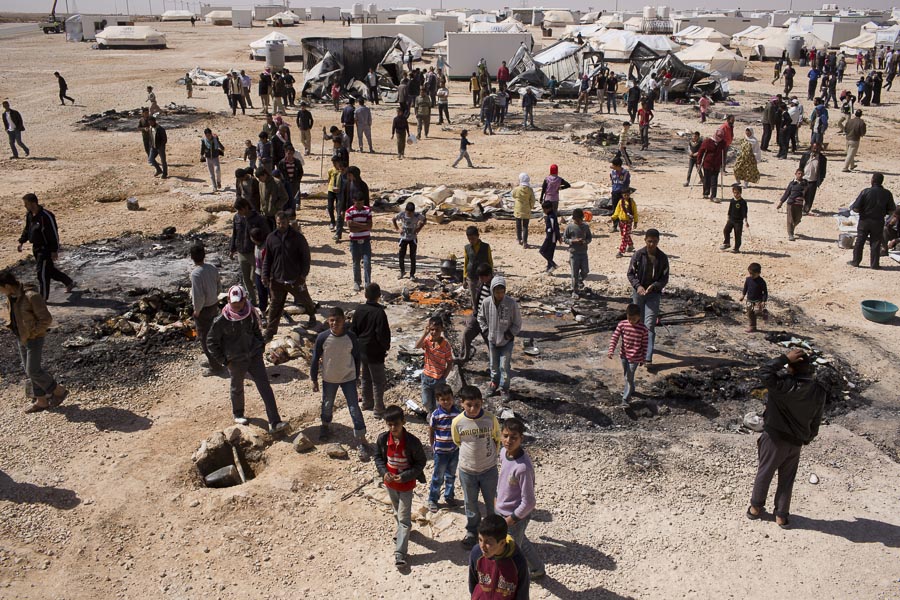
Image may be NSFW.
Clik here to view.
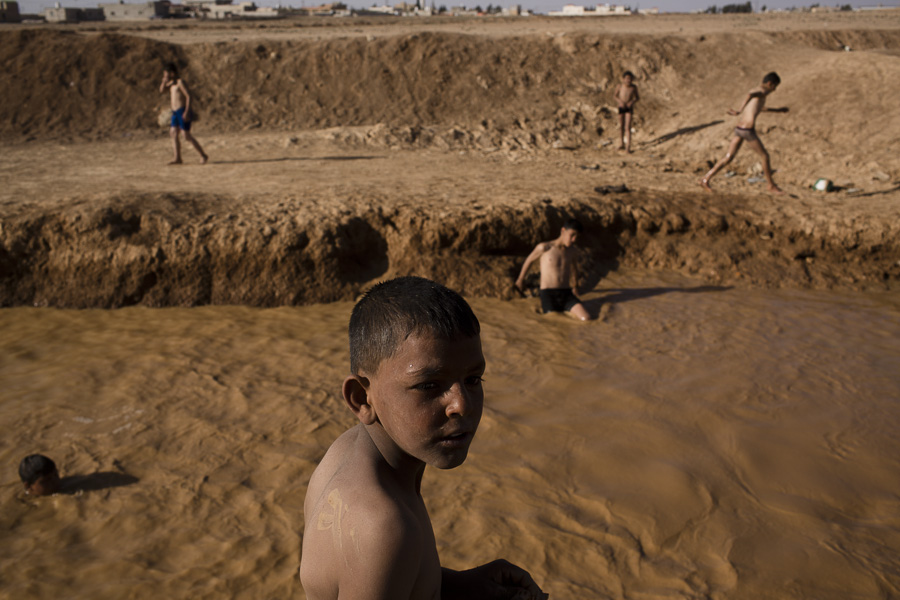
This post is the second of two parts by Oculi collective photographer David Maurice Smith documenting Syrian refugees in Jordan. The first part focused on refugees living outside camps in the urban areas near the Syrian border and can be seen here.
--
Photography and text by David Maurice Smith (@davidmauricesmith).